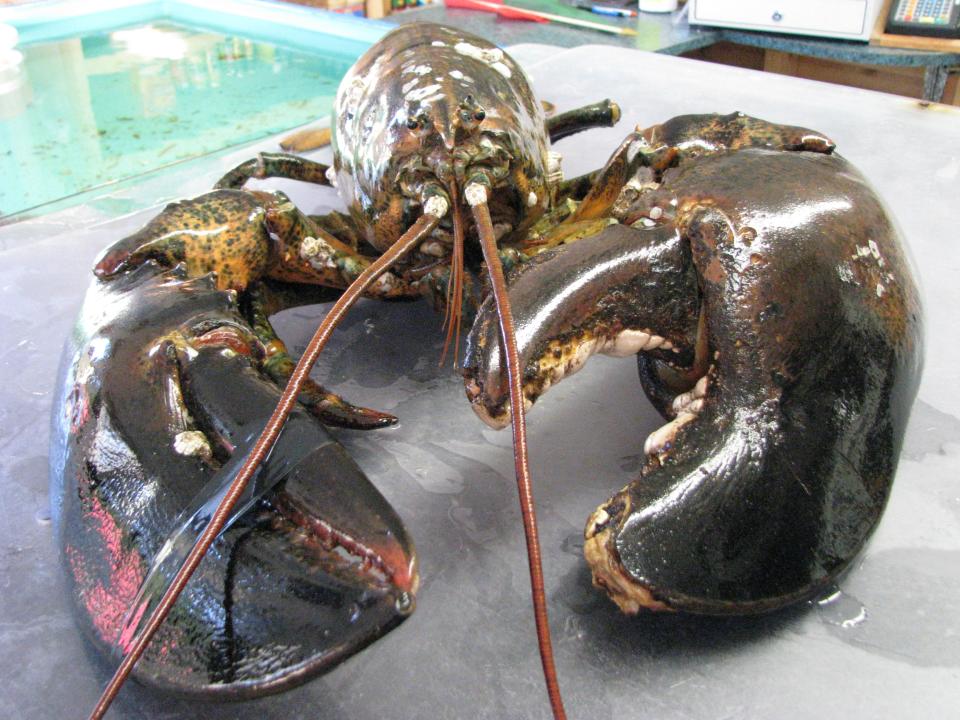Fun facts about lobsters: A deep dive into the tasty Cape Cod crustacean
WELLFLEET — Lobsters and Cape Cod go together like, well, lobsters and melted butter. Some would say a lobster in the rough at a Cape restaurant is the signature meal of the peninsula. But the tasty crustacean hasn't always been a culinary star.
According to the Maine Department of Marine Resources, "historically, lobsters were so plentiful that Native Americans used them to fertilize their fields and to bait their hooks for fishing."
And they didn't rank high on the yummy list back in colonial days. "Lobsters were considered 'poverty food,'" reports the Maine Department of Marine Resources. "They were harvested by hand along the shoreline and served to prisoners and indentured servants … In Massachusetts, some of the servants finally rebelled. They had their contracts state that they would not be forced to eat lobster more than three times a week."

But there's way more to lobsters than how they look on a plate. A species report from the National Oceanographic and Atmospheric Administration is full of fascinating facts about the lives of lobsters, and we culled out the highlights. So, direct from NOAA, we bring you:
Fun facts about lobsters
American lobsters have a long life span. It’s difficult to determine their exact age because they shed their hard shell when they molt, leaving no evidence of age. However, scientists think some American lobsters may live to be 100 years old.
The American lobster is a crustacean with a large shrimp-like body and 10 legs, two of which are large, strong claws. One claw is a big-toothed crusher claw for pulverizing shells, and the other is a finer-edged ripper claw, resembling a steak knife, for tearing soft flesh.
They can weigh up to 44 pounds.
Lobsters must periodically molt in order to grow, shedding their hard, external skeleton (shell) when they grow too large for it and forming a new one. They eat voraciously after they molt, often devouring their own recently vacated shells. Eating their shell replenishes lost calcium and helps harden their new shell.
In general, a variety of bottom-dwelling species feed on lobster, including fish, sharks, rays, skates, octopuses and crabs. Young lobsters are especially vulnerable to predators. Large, hard-shelled lobsters may be immune to predators (except humans).
They live alone and are very territorial.
Near the coast, small lobsters do not travel much, but larger ones may travel extensively. Offshore lobsters migrate during the spring anywhere from 50 to 190 miles.
In 2022, commercial landings of American lobster totaled 119 million pounds and were valued at $515 million, according to the NOAA Fisheries commercial fishing landings database.
There’s a reason we associate Maine with lobsters — the state has led American lobster landings for more than three decades. Massachusetts is the second leading producer. Together, these two states produce 93% of the total U.S. American lobster harvest.
Source: NOAA Species Directory/American Lobster
Eric Williams, when not solving Curious Cape Cod mysteries, writes about a variety of ways to enjoy the Cape, the weather, wildlife and other subjects. Contact him at ewilliams@capecodonline.com. Follow him on Twitter: @capecast.
The Cape Cod Times mobile app gets you to the heart of the matter — fast. Whether breaking news, sports, entertainment or weather get succinct, personalized coverage along with award-winning videos, captivating photography, and interactive user features. Download the app.
This article originally appeared on Cape Cod Times: Fun facts about lobsters on Cape Cod: How big can they get?

